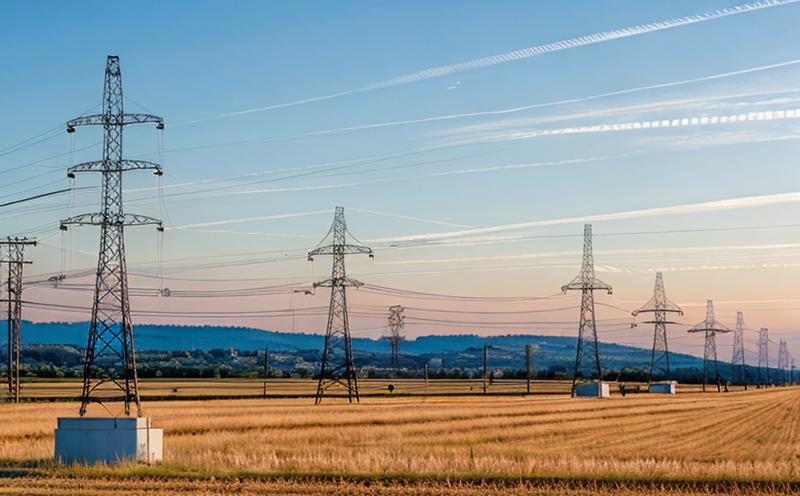ASTM D2472 SF₆ Gas Quality Testing
The ASTM D2472 standard outlines procedures and parameters for measuring the quality of sulfur hexafluoride (SF₆) gas used in high-voltage switchgear, circuit breakers, and other transmission and distribution systems. This testing is crucial as SF₆ gas plays a vital role in insulating electrical equipment and providing arc-quenching capabilities.
Transmission and distribution systems are critical components of the power sector, ensuring the reliable delivery of electricity to consumers. The quality of SF₆ gas directly impacts the performance, longevity, and safety of these systems. This testing ensures that the SF₆ gas meets stringent quality requirements outlined in ASTM D2472.
The process involves several steps, including sampling, preparation, and analysis. Sampling is conducted using airtight containers to avoid contamination. The prepared sample is then analyzed for purity levels, humidity content, trace impurities like moisture, carbon dioxide (CO₂), and other gases that could degrade the insulating properties of SF₆.
ASTM D2472 specifies several tests including:
- Moisture Content: Measured using dew point meters or electrochemical sensors to ensure it does not exceed 6 ppmv (parts per million volume).
- Cold Trapping Analysis: This involves cooling the gas sample and trapping any moisture that condenses out, allowing for precise measurement of water vapor content.
- Trace Impurities: Detection and quantification of CO₂, nitrogen dioxide (NO₂), carbon monoxide (CO), and other impurities using gas chromatography or infrared spectrometry to ensure they do not exceed specified limits.
- Acidity: Determined through titration methods to measure the acidity level which should be below 1 μg/g (micrograms per gram).
The testing ensures that SF₆ gas meets international standards for reliability and safety, making it an indispensable tool in the power sector.
Our laboratory adheres strictly to ASTM D2472 guidelines. Our experts ensure accurate and reliable test results by using state-of-the-art equipment and highly trained personnel. This guarantees that our clients receive precise data, which is essential for maintaining high standards of quality in transmission and distribution systems.
Industry Applications
The use of SF₆ gas in transmission and distribution systems is widespread across the power sector. Here are some key applications:
- Switchgear: Used to interrupt or switch off high-voltage circuits safely.
- Circuit Breakers: Essential for protecting electrical systems from overcurrent conditions by rapidly opening and closing circuit breakers.
- Instrument Transformers: Provide accurate measurements of currents and voltages in transmission lines.
- Gas-Insulated Switchgear (GIS): Utilized to insulate and cool high-voltage equipment, enhancing safety and efficiency.
In each application, ensuring the quality of SF₆ gas is paramount. This testing helps maintain system integrity, reliability, and safety, thereby supporting the efficient operation of power distribution networks.
Eurolab Advantages
EuroLab provides unparalleled expertise in ASTM D2472 SF₆ gas quality testing, ensuring that our clients receive accurate and reliable results. Our advantages include:
- Accurate and Precise Testing: Using cutting-edge technology and highly trained personnel.
- Comprehensive Reporting: Providing detailed reports with actionable insights for quality managers and compliance officers.
- Regulatory Compliance: Ensuring that all tests meet international standards, including ASTM D2472.
- Expertise in the Sector: Our team of experts understands the specific needs of the power & utilities sector.
- State-of-the-Art Facilities: Equipped with advanced laboratories and instrumentation to conduct thorough testing.
- Rapid Turnaround Times: Efficient processing of samples to provide timely results.
- Customer Support: Offering guidance on best practices for SF₆ gas management and maintenance.
Our commitment to excellence ensures that our clients can trust in the quality and reliability of their transmission and distribution systems.
Environmental and Sustainability Contributions
The testing of SF₆ gas under ASTM D2472 not only enhances system performance but also contributes significantly to environmental sustainability. By ensuring that SF₆ remains in its optimal state, the risk of leaks is minimized. This helps prevent the release of this potent greenhouse gas into the atmosphere.
Our laboratory’s adherence to strict quality standards and best practices plays a crucial role in reducing the environmental impact associated with electrical equipment. Proper maintenance and testing of SF₆ ensure that it remains an effective insulator, thereby supporting efficient energy distribution and minimizing waste.
In conclusion, ASTM D2472 SF₆ gas quality testing is not only important for maintaining reliability and safety but also for contributing to a more sustainable future in the power & utilities sector.





